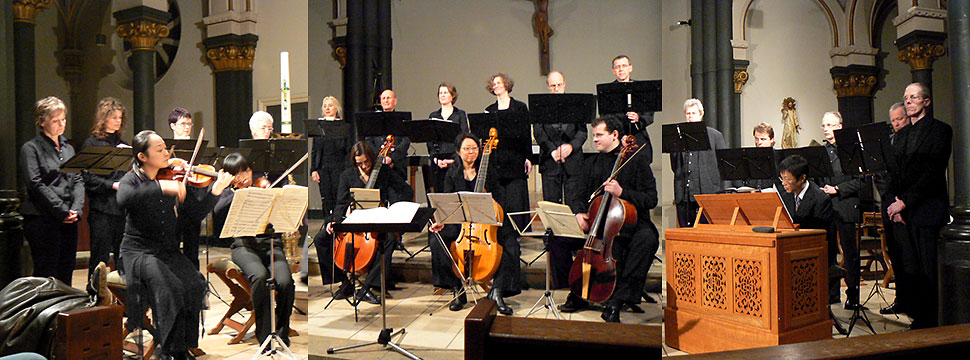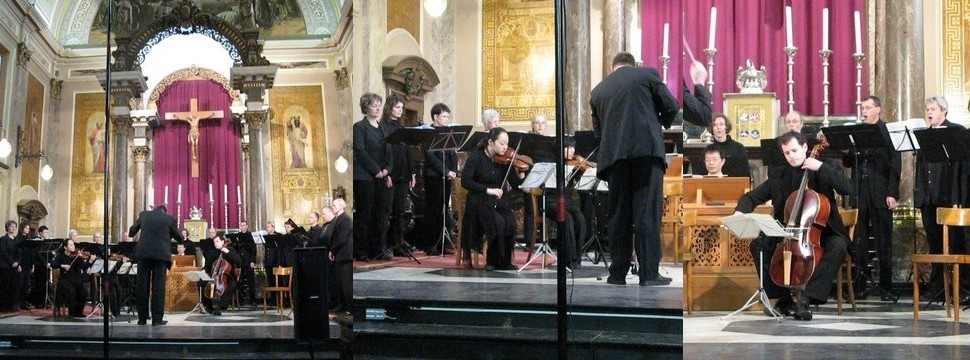Membra Jesu Nostri
8:15 pm, Friday 12 March 2010
Eendrachtskerk, Eendrachtsstraat 95, Rotterdam (map).

Cappella Gabrieli in Rotterdam, 12 maart 2010. Fotos: Marion Smits.
3 pm, 14 March 2010
St. Josephkerk, Jansstraat 41, Haarlem
(route, kaart).

Cappella Gabrieli in Haarlem, 14 maart 2010. Fotos: Willem Stoop.
Cappella Gabrieli, with Yukie Yamaguchi (first violin), Rie Kimura (second violin), Nika Zlataric (first viol), Cathérine Bahn (second viol), Yerzi Walczak (cello), Yoshi Kazama (organ).
Bach’s teacher and his father-in-law
In late autumn 1704, nineteen year-old Johann Sebastian Bach left Arnstadt for Lübeck on the Baltic, four-hundred kilometres away. Why did Bach undertake such a journey through Northern Germany, on foot, through the unwelcoming Harzgebergte, back when winters were really winters? After all, Nordic walking was yet to be invented.
Bach went on a study trip. His goal was the Marienkirche, where Diet(e)rich Buxtehude was organist and also organised the Abendmusiken, a concert series for (and subsidised by) the Hanzestad merchants.

Diet(e)rich Buxtehude (1637-1707) in a painting (1674) by Johannes Voorhout. Whoever looks for the composer’s likeness usually ends up here. The musician appears to be devoted to contemplating his composition. However, this is only a fragment. We see where Buxtehude’s attention really lies in the complete painting below. (Source: Wikipedia)
A four-week journey was apparently not too much trouble in order to experience a musician such as Buxtehude. What was good enough for Bach, is hopefully good enough for you too, which is why we bring you Buxtehude’s most famous work, a baroque jewel, as a prelude to Easter. Membra Jesu nostri (1680) is a cycle of seven cantatas for singers and chamber orchestra that features seven essential body parts of Jesus on the cross: the feet, knees, hands, chest, heart and face. Membra Jesu nostri is considered to be the first Lutheran oratorio.
The other work on the programme is Dominus illumination mea, a Geistliches Konzert by Franz Tunder (1614-1667). Buxtehude was Tunder’s successor and immediately became his son-in-law. In that period, the pastor’s daughter was part of the employment package. This piece is accompanied by strings and basso continuo.

… it is the impressive lute player. (Source: Wikipedia)
Programme
Franz Tunder (1614 - 1667):
Dominus illuminatio mea
Dieterich Buxtehude (c. 1637 – 9 May 1707):
Membra Jesu Nostri